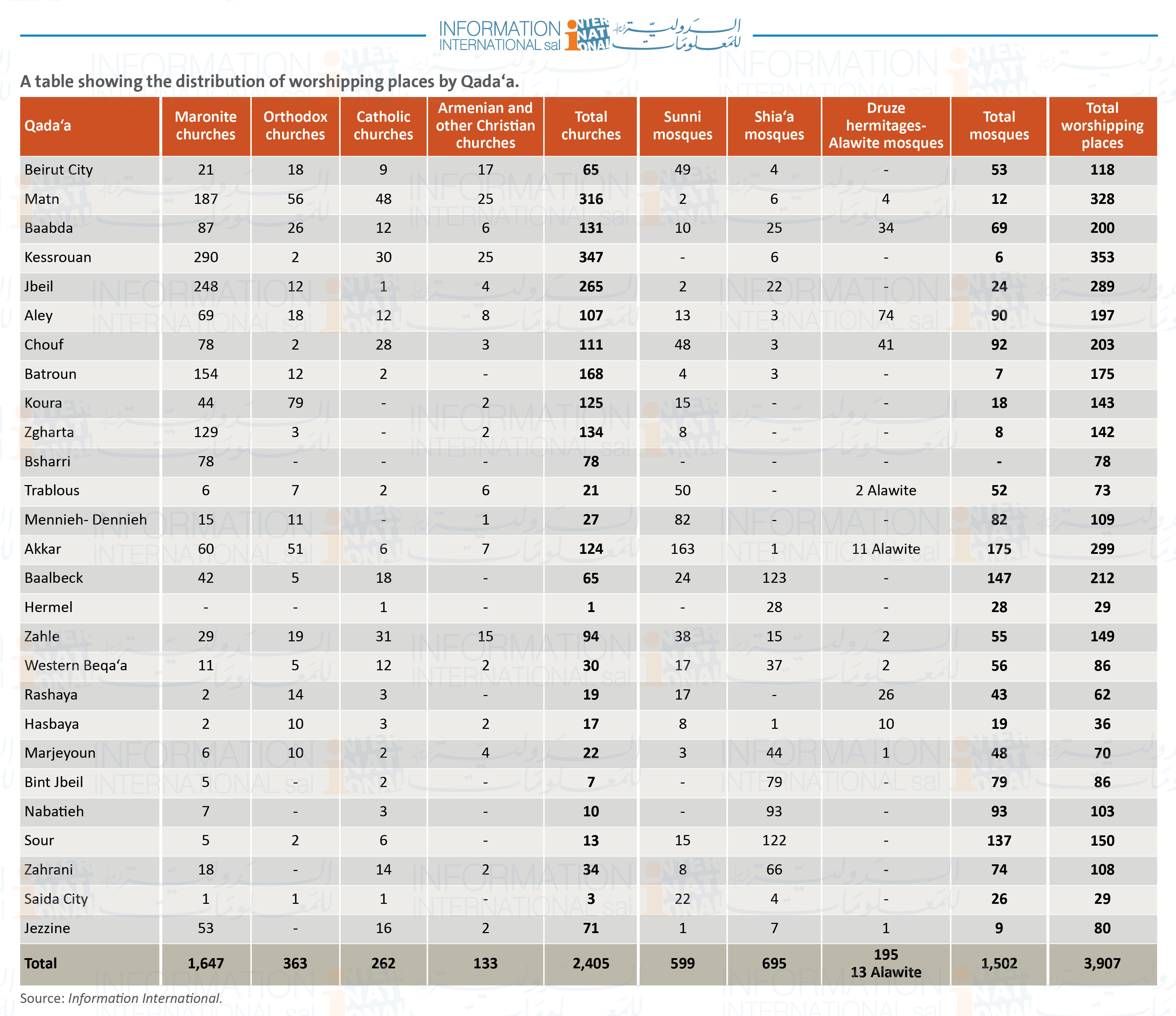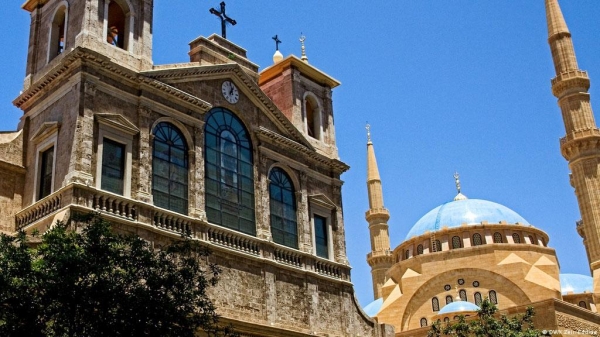2,405 churches 1,502 mosques & hermitages 3,315 schools & universities in Lebanon
2,405 churches
1,502 mosques & hermitages
3,315 schools & universities
in Lebanon
There is a mosque and a church
In each holy village
We need someone who can save us
From this miserable state
(Poet Omar Al-Zaini, about 60 years ago)
The Lebanese political and societal system recognizes the existence of 18 Christian and Muslim sects, each having its own ceremonies and rituals that are practiced by its followers in their homes or in the worshipping places scattered across Lebanon. While some neighborhoods, villages and towns have worshipping places for only one sect (Christian or Muslim) or confession, others have worshipping places for diverse confessions or for diverse sects and confessions.
A survey conducted by Information International shows that there are 2,405 churches and 1,502 mosques in Lebanon, a total of 3,907 churches, mosques and hermitages distributed over the following sects:
-The Maronite sect has the largest number of churches (1,647), representing 68% of the total Christian churches and 42% of the total worshipping places in Lebanon.
-By Qada‘a, Kessrouan comes first in terms of worshipping places (353 churches and mosques), followed by Matn (328 churches and mosques).
- Tannourine, which is located in the Qada‘a of Batroun, has the largest number of churches and worshipping places.
- Maronite: 1,647 churches
- Greek Orthodox: 363 churches
- Greek Catholic: 262 churches
- Armenian and other Christian sects: 133 churches
- Sunni: 599 mosques
- Shia‘a: 695 mosques
- Druze: 195 hermitages and one religious center
- Alawite: 13 mosques
Such large number of worshipping places, which constitutes 118% of the number of schools and universities, reveals this commitment to sectarianism. Yet, instead of promoting sectarianism, private funds shall promote education especially since the number of people attending the worshipping places is inevitably much lower than the number attending schools and universities. The worshipping places are distributed by Qada‘a as illustrated in the following table.
A table showing the distribution of worshipping places by Qada‘a.

Source: Information International.
Note: The 3 synagogues, chapels, shrines and Husseiniyat are not counted in this survey.








Leave A Comment